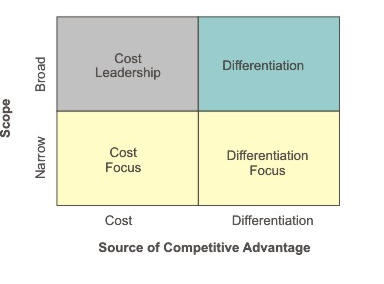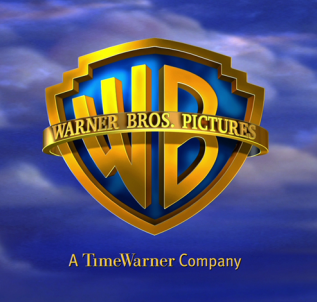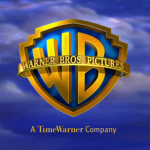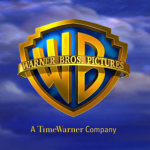Posts by John Dudovskiy

Six sigma is “business management strategy used by many different industries in an effort to improve the quality of products or services produced by the business through the removal of defects and errors” (Business Dictionary, 2014, online). The primary commercial objectives of Six Sigma programs is associated with application of strategy based on measurements in order to improve wide range of processes and sub-processes with positive implications on quality of products and services. Application of Six Sigma philosophy is not exclusive to manufacturing processes, and the framework can be applied to a wide range of organisational practices and processes such as IT, administration, quality assurance, design, purchasing etc. Some of the leading companies operating diverse sectors such as General Electric, Motorola, Pepsico and even Amazon.com have been able to reduce the levels of operational costs and achieve greater levels of customer satisfaction through successful implementation of Six Sigma principles. Six Sigma philosophy integrates the principles of strategic planning, benchmarking, supply-chain management, organisational learning into a single approach in a synergistic manner, thus successful application of Six Sigma can benefit from advantages associated with each of these individual management principles. Along with its numerous advantages discussed above Six Sigma has certain disadvantages that include necessity for employees to undergo formal Six Sigma training programs before implementation of its principles. Moreover, positive implications of Six Sigma programs may not be evident in short-term perspective, and period of time of at least several months is required before Six Sigma programs make positive contribution to the levels of revenues after their implementation. Nevertheless, substantial advantages of Six Sigma outweigh its few disadvantages, and therefore application of Six Sigma in an appropriate manner makes a good business sense. DMAIC abbreviation stands for define, measure, analyse, improve and control, and each of these words represent consequent…

Baldwin and Ford’s Transfer of Training Model (1988) is based on the idea that the transfer of learning depends on training inputs that include trainee characteristics, training design and work environment. However, an important point in the model is that the outcome of training is impacted by trainee characteristics and work environment in a direct manner, whereas the impact of training design depends on the levels of training outputs such as learning and retention. Baldwin and Ford’s Transfer of Training Model (1988) Source: Baldwin and Ford (1988) The Transfer of Training Model has made a valuable contribution on the study of training transfer. The main benefit of the model in practical levels can be explained in a way that it allows framework for evaluating the impact of each individual input factor in training and identify and utilise the potentials for improving the impact of elements associated with each individual factor. References Baldwin, T.T & Ford, J.K. (1988) “Transfer of training: A review and directions for future research” Personnel Psychology, 41 (65)

Iran was the first state in the Persian Gulf to find oil in 1908, and since 1920s petroleum has served as the main industry in Iran. There is a general consensus in the literature that the overthrow of the Shah of Iran and the revolution in Iran in 1977 came as a great surprise to many individual and organisational observers. This revolution has been political, as well as, cultural. Increasing levels of rentierism in Iran under the rule of Shah, at the same time when neglecting the needs and concerns of ordinary people can be specified as one of the major factors contributing to the emergence of revolution. Specifically, it has been noted that “after the mid-1960s, this state did not need to wrest taxes from its own people, and the economic basis of its revenues was an industry oriented primarily to exports, and employing only a tiny percentage of the domestic labour force” (Skocpol, 1994, p.244). However, it can be argued that the level of rentierism in Iran has changed only a little after the revolution due to a range of reasons such as high levels of corruption, leadership incompetence, and lack of motivation from the government leadership. Moreover, Gordon et al. (2008) assess the average degree of rentierism in Iran for the period between 1972 and 1999 to be 55 per cent. According to Gordon et al. (2008) rentierism has been causing deep economic structural weaknesses in Iran and this along with political uncertainty and environmental vulnerabilities represent complex challenges for Iran in short-term and long-term perspectives. Negative implications of rentierism are also noted by Duero (2009), who links rentierism in Iran to the issues of unemployment and underemployment, demographic problems and the issues associated with patterns of energy production and consumption. It has been assessed that government’s…

Rentier state theory is “a political economy theory that seeks to explain state-society relations in states that generate a large proportion of their income from rents, or externally-derived, unproductively-earned payments” (Gray, 2011, p.1). In simple terms, rentier states derive substantial proportions of their revenues from renting their sources of natural resources to external parties. Rentier states are less motivated to offer concessions to individuals because it is less dependant of taxation to execute its duties, receiving substantial amounts of funds from abroad. Development of rentierism and rentier state theory into academic and practical levels can be divided into the following three phases: classical rentier state theory, the second phase of rientierism and late rientierism. Classical Rentier Theory The first phase of rentierism encompasses the period from the beginning of 1980’s and to the early 1990’s. This period is marked with immediate aftermath of Iranian revolution and Iran-Iraq war of 1980-1988. According to Elbadawi and Maksidi (2010), these both events have played significant role on fluctuations of world oil prices, with implications on global scale. Jenkins et al. (2011) argue that this period of time is associated with a harsh, dictatorial rule of heads of rentier states. Moreover, Jenkins et al. (2011) note about misallocation of wealth, high levels of corruption and overall inefficiencies in rentier Gulf states during the phase. The Second Phase of Rentierism The validity of governments of rentier states being challenged, both, internally and externally is one of the main tendencies marking the second phase of rentierism. Specific factor contributing to these tendencies has been named as phenomenal economic developments in Dubai that served as a point for comparison by people from other oil rich countries in the region. Moreover, during the second phase of rentierism economic scholars acknowledged that the relationship between the levels…

Ansoff Growth matrix assists businesses to increase their revenues by offering four different growth options depending on products and markets. According to the matrix market penetration is a type of growth where the company attempts to increase the level of sales of existing products into current markets. Product development growth strategy, on the other hand, involves introducing new products into current markets. A situation where a business enters new market with its existing products is marked as market development growth strategy. Diversification growth strategy can be achieved through offering new products into new markets. For example, this principle is followed by Warner Bros., although the extent of utilisation of each individual growth strategy varies. Warner Bros. uses market penetration and product development strategies in the US in particular through periodically introducing popular entertainment shows. Due to the following to this strategy for the season of 2012 – 2013, Warner Bros. Television has accounted for more than 30 per cent of top shows on broadcast TV in the US (Annual Report, 2013). Acquisition of 55 per cent of Shed Media plc, one of the leading entertainment firms in the UK for USD 100 million in 2010 (Annual Report, 2013) can be referred in order to illustrate market development strategy of Warner Bros. Diversification strategy, as discussed above is engaged by Warner Bros. in relation to quality of content and the manners of delivery and consumption of films and entertainment products and services. References Annual Report (2013) Time Warner

Porter’s generic strategies are one of the most popular tools used when undertaking a competitive analysis in any industry. According to Porter (1985) companies can generally choose from two broad strategies, product differentiation or cost efficiency in broad market scope, or they may pursue product differentiation or cost efficiency strategies within a particular customer segment. To put it simply, companies usually choose to maximise their profit through offering products or services in lower prices, or offering superior quality products or services for higher price. And this can be done for the whole business or for a particular customer segment. A focus strategy “is defined by its emphasis on a single industry segment within which the orientation may be toward either low cost or differentiation” (Czinkota and Ronkainen, 2007, p.196). When pursuing a cost leadership strategy the company prices its products or services at a lower level than competition. Cost leadership strategy is associated with engagement in economies of scale and maintaining strict control of costs. Differentiation strategy, on the other hand, focuses marketing efforts on quality and uniqueness in relation to specific aspects of products or services. There are many advantages product differentiation strategy provides to the business. Product differentiation strategy increases the level of customer loyalty dramatically by mentioning the statistical data according to which US consumer loyalty to a single brand varies from 30 percent in batteries up to 70 percent in cigarettes. When conducting competitive analysis companies should seek following information: current strategy and future objectives of competitors, assumptions about the industry in which competitors believe, and strengths and weaknesses of competitors. Example: Application of Porter’s Generic Strategies to Warner Bros. According to Porter’s generic strategies differentiation in broad competitive scope marks the main competitive advantage of Warner Bros. The company engages in diversification in two levels:…

Five forces framework introduced by Porter (1980) has been acknowledged as an effective tool used in strategy formulation. Application of the framework is associated with analysis of five separate factors determine the overall level of competitiveness in the industry. Warner Bros. Porter’s Five Forces Analysis can be illustrated in the following manner: Threat of new entrants in film, television, and music entertainment industry has been traditionally moderate due to high levels of cost barriers. However, internet and rapid developments in information technology have increased the threat of new entrants to the industry through providing opportunities to lower cost barriers. Bargaining power of buyers is immense as there are no switching costs for the customers of Warner Bros. Buyer bargaining power is also fuelled by abundance of offers in films and manufacturing industry. Threat of substitute products for products offered by Warner Bros. is significant. Substitutions for Warner Bros. products include a wide range of video games, as well as, increasing popularity of major social networking websites such as Facebook, YouTube and Twitter. Bargaining power of suppliers is greater in films and entertainment industry compared to many other industries. Due to the unique nature of this industry famous actors can be classified as suppliers at the same time as serving as human resources. According to this approach, the success of sequels of famous Warner Bros. franchises such as Lord of the Rings, Batman, Harry Potter and Hangover is possible only through attracting A-list actors and actresses who have great bargaining power. Rivalry among existing competitors in global entertainment industry is intense and major companies competing in the industry along with Warner Bros. include Paramount Pictures Corporation, The Walt Disney Studios, Fox Filmed Industries and others. This portal also contains SWOT and PESTEL analyses for Warner Bros. References Porter, M. (1980) “Competitive…

Warner Bros. is a subsidiary of Time Warner and during the year of 2012 alone the company has produced 18 films in English language internationally and 23 films in local languages around the globe (Annual Report, 2012). The portfolio of Time Warner along with Warner Bros. comprises a set of famous media and entertainment brands such as Time, New Line Cinema, Sports Illustrated, TNT, People, TBS, Cinemax, HBO and CNN. Time Warner has generated the revenues of USD 28.7 billion during 2012, with operating income amounting to USD 5.9 billion (Annual Report, 2012). Warner Bros. represents Film and TV Entertainment segment of Time Warner and during the year of 2012 Warner Bros. has generated USD 12 billion revenues which accounts to 39% of Time Warner total revenues. Warner Bros. vision is associated with ‘sharing stories from the most talented and creative voices in the industry in a consistent manner’. Core mission of Warner Bros. has been specified as ‘creating and distributing great stories to audiences around the globe’. Warner Bros. produces feature films in two formats: on its own and through co-financing arrangements with other companies. “Warner Bros. feature film strategy focuses on offering a diverse slate of feature films with a mix of genres, talent and budgets” (Annual Report, 2012. p.24). In other words, product differentiation strategy is the main business strategy currently pursued by Warner Bros. strategic level management. Attempts to lead technological changes mark another important aspect of Time Warner and Warner Bros. corporate strategy. Specifically, the company is taking digital efforts to the next level according to its principles of Contents Everywhere, and consumers are being provided with access to service thorough increasing numbers of platforms such as mobile devices in innovative manners. Warner Bros. is one of the leading global entertainment companies that has successfully…

PESTEL analysis can be explained as “a checklist to analyse the political, economic, socio-cultural, technological, environmental and legal aspects of the environment” (Rao et al., 2009, p.115). The framework assists with analysis of the impact of each of these individual aspects of external environment to be used in decision-making by senior management. PESTEL analysis for Warner Bros. is illustrated on the following table: Political Political situation in the US and foreign markets Censorship on media and entertainment in emerging markets Impacts of lobbying groups in film and entertainment industry Effects of industry pressure groups Economical Impact of US foreign trade deficit issue Resign costs of advertising Level of US unemployment Inflation rate in the US Changes in the US taxation system Social Value changes in the US and other market Increasing influence of internet on social life Changes in demographic challenges Increasing importance of work-life balance Acceptance of same-sex marriages by increasing numbers of states in the US Technological Increasing popularity of 3D technology Maturation of films in DVD format Emergence of innovative platforms to consume entertainment products Increasing integration of IT in various stages of film production Technological breakthroughs in film production Ecological Problems associated with global warming Rising environmental concern of people globally Increasing importance of eco-tourism and related issues Increasing importance of corporate social responsibility (CSR) Legal Licensing issues with other organisations in the industry Problems related to intellectual property Legal barriers to enter emerging markets Changes in the US rules and regulations in relation to films and entertainment industry. Warner Bros. PESTEL Analysis References Rao, C.A., Rao, B.P. & Rao, K. (2009) “Strategic Management and Business Policy: Text and Cases” Excel Books

Strengths Warner Bros. has a solid financial position with USD 12 billion revenues generated during the year of 2012 alone with more than USD 1.2 billion operating income (Annual Report, 2012). Moreover, Warner Bros. has produced a series of successful franchises such as The Lord of the Rings, Batman, Harry Potter and Hangover that have immense contributions to the level of profitability of the company. Knowledge and experiences associated with the production of these successful franchises can be specified as strengths of Warner Bros. The agreement of Warner Bros. with Netflix Inc. that allows the company to stream previous sessions of shows’ series shown on CW network can be added to the list of its strengths due to the associated potentials for profit maximisation. Weaknesses Overdependence of Warner Bros. on the home market in the US is its major weakness in global competition. US government debt issues and implications of this issue on consumer spending patterns in the future increases the level of urgency of this weakness on long-term perspectives. Moreover, recent damage to Warner Bros. brand image for being used for infringing Cat Meme Copyright can be listed as weakness for the company that has to be addressed by senior level management. Opportunities There is an attractive profit maximisation opportunity for Warner Bros. through introducing new instalments to its successful franchises such as The Lord of the Rings, Batman, Harry Potter and Hangover. Expansion of digital distribution capabilities represents opportunity for Warner Bros. to strengthen its role as a leader of technological changes in the industry. Moreover, the levels of Warner Bros. revenues can be further increased through higher integration of product placement marketing strategy. Threats Business threats faced by Warner Bros. are diverse and they primarily include further decline of the sales of DVDs due…
